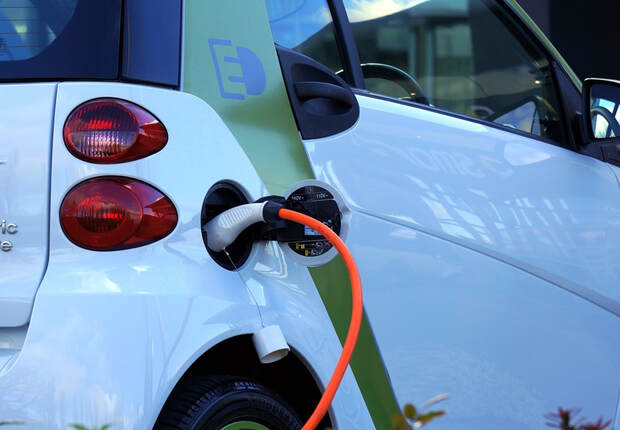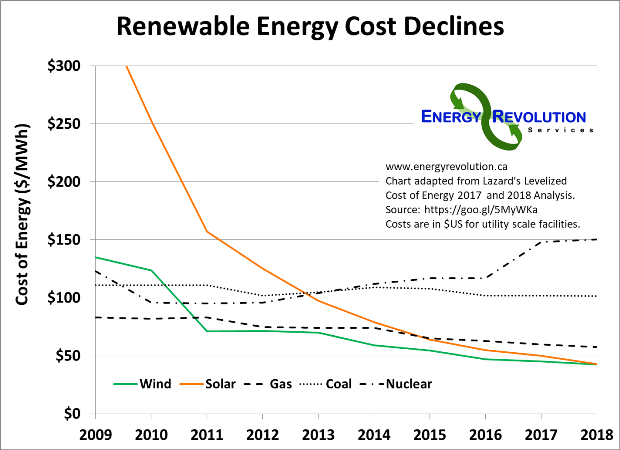|
Michael Pullinger It can be daunting to think how big a task sits ahead of us in making our energy system truly sustainable. It’s only in the rear-view mirror that we see how far we’ve truly come, and the last decade has seen huge progress. What do I see as some of the biggest breakthroughs of the last ten years? 1. Electric Vehicles I grew up in a rural area, and have spent the last three years ferrying a young daughter around town. I know as well as anyone how important a personal car is in the busy lives we lead today. While advances in public transit and bike lanes are laudable, many people (myself included) will rely on a personal car for years to come, so electric vehicles are a critical technological solution. While electric vehicles are still a relatively small part of the overall transportation picture, the rate of growth has been a staggering 60% per year. Bloomberg New Energy Finance predicts that electric vehicle sales will overtake traditional gasoline vehicles before 2040, while some places such as Norway, are already on the verge of doing so. Now a whole range of other transportation methods are going electric from heavy trucking to shipping and short-haul aviation. Thanks to advances over the last decade, the future of transport looks very different. 2. LED Lighting Lighting is one of the modern conveniences we take for granted. Yet lighting accounts for approximately 6% of total electricity use in the United States or 11% of commercial and institutional energy use in Canada. Over the past decade, LED lighting has gone from a relative novelty, to holding the largest market share of any lighting technology worldwide. This shift was described by Goldman Sachs as “…one of the fastest technology shifts in human history”. This has all come about due to substantial cost reductions for a technology that has an efficiency up to two times that of fluorescent lighting, and up to five times traditional incandescent bulbs. These innovations earned three Japanese researchers the 2014 Nobel Prize in Physics. Coupled with the long lifetime of LED bulbs (reducing cost of replacements) have transformed the lighting sector, and it’s safe to say that LED is here to stay. 3. Cost and Investment Tipping Points I still hear far too often that wind and solar won’t work because they cost too much. In 2010 these people may have had a point. It’s time for an update. Wind and solar power are now among the cheapest forms of energy in many parts of the world. This decade has seen these renewable technologies move from expensive novelties to bargain pricing. Subsidies are being removed and wind and solar are still standing on their own feet.
This has pushed a massive surge in investment in clean energy. Investment in renewable electricity surpassed traditional forms of power generation. 4. 100% Renewable Energy Grids But so what if wind and solar have gotten cheaper? That must be useless at night time, or when the wind’s not blowing? Surprisingly, the intermittency of wind and solar isn’t a revelation to those in the industry. It’s just a challenge to be overcome, and the last decade has seen huge advances. The last decade has seen many small islands powered entirely by renewables for a week (and more) at a time. Being at the smaller end of the scale, offshore islands and remote communities lead the way, but huge advances in batteries and other energy storage technologies have been adopted on massive (“grid-level”) scale to bridge the gap and reduce the need for traditional fossil-fuel powered backup plants. The ultimate will be when large countries can continuously rely on renewable energy for all their power needs. Places like the United Kingdom, Germany, Costa Rica and Portugal are pushing the boundaries and showing that this is not just a pipe dream, but very much a path that we’re already on. What Next? I shouldn’t speculate where the next breakthroughs will be, because I’ll almost certainly be wrong. Instead I’ll point out some areas that pique my interest right now.
Have I missed any of your favourites? Let me know your thoughts in the comments below.
0 Comments
Leave a Reply. |
Categories
All
Archives
May 2024
|
Site powered by Weebly. Managed by Web Hosting Canada



 RSS Feed
RSS Feed